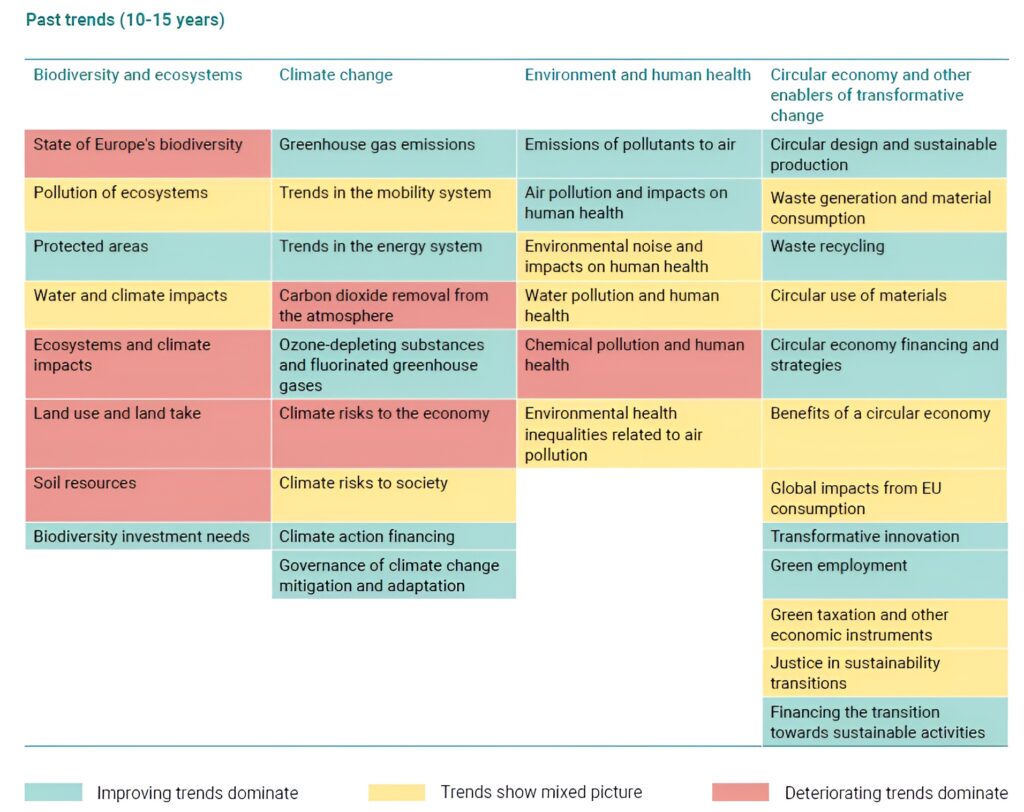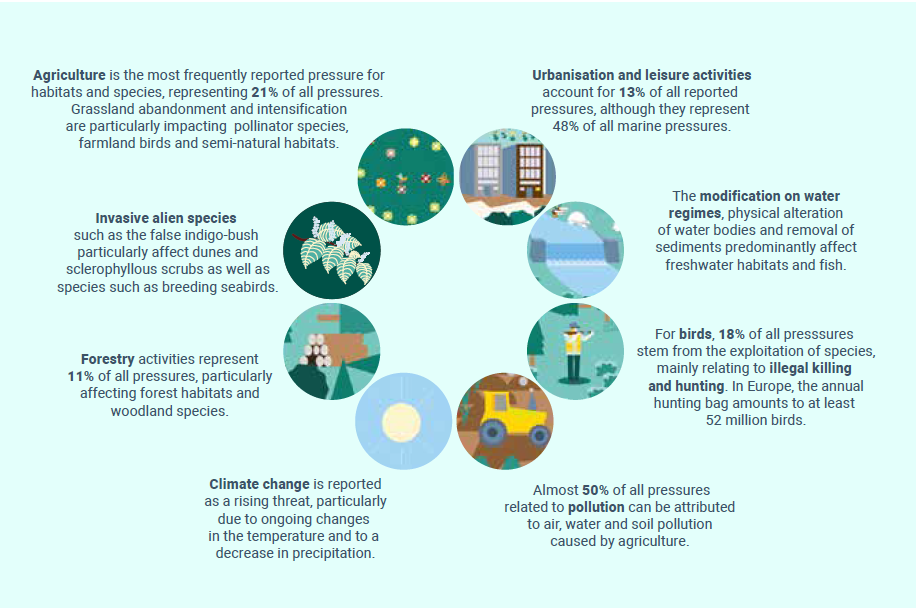Every five years, the European Environment Agency (EEA) provides an honest look at our continent’s environment. The agency has just released its latest flagship publication, the Europe environment report 2025. This vital tool, formally titled “Europe’s Environment 2025: Knowledge for Resilience, Prosperity, and Sustainability,” provides a science-based assessment for policymakers, industries, and citizens on where we stand with everything from climate change to pollution.
For us at MoeBIOS, this report validates our mission. Moreover, it serves as an urgent call to accelerate our work in building a circular bioeconomy for bioplastics. Let’s dive into the key findings and explore how MoeBIOS is directly addressing the challenges laid out by the EEA.
The big picture: a triple crisis and a widening circularity gap

The EEA report frames Europe’s situation within a “triple planetary crisis”: climate change, biodiversity loss, and pollution. Specifically, while climate change often dominates headlines, the report brings the devastating impact of pollution into sharp focus.
One of the most sobering statistics shows that environmental risk factors like polluted air, water, and soil contribute to at least 10% of all premature deaths in Europe. This isn’t an abstract environmental issue; it is a public health emergency.
At the heart of this problem is our linear “take-make-waste” economy. In fact, the report reveals Europe’s circularity rate is a mere 11.8%. This rate measures the share of materials we recycle back into the economy. Even more concerning, the EU is unlikely to meet its 2030 goal of doubling this rate. Therefore, the EEA clearly states that we urgently need better recycling systems and robust markets for secondary raw materials to close this gap.
MoeBIOS in action: This is precisely the gap MoeBIOS was created to fill. Our entire mission is to build new, high-value recycling chains for bioplastics. We turn waste that would otherwise end up as pollution into high-quality materials. By proving that we can successfully upcycle bioplastics like PLA, PHA, PBS, and PEF, we are creating the very markets for secondary raw materials that the EEA report calls for.
A deep dive into MoeBIOS’s core value chains
The EEA report’s analysis of Europe’s key production and consumption systems directly validates MoeBIOS’s focus on packaging, agriculture, and textiles.
Industry, plastics, and packaging
Plastic waste remains a major challenge. The report notes that plastic consumption and waste generation will likely continue to grow. As a result, this creates extensive environmental and health impacts, from marine litter to microplastic contamination. The solution, according to the EEA, lies in making products more circular. This means they must be durable, repairable, and, crucially, recyclable.
MoeBIOS in action: Our project tackles this challenge head-on. We are developing innovative recycling technologies for bioplastics used in packaging. We demonstrate that these materials don’t have to be single-use. Through advanced mechanical, chemical, and enzymatic recycling, we are creating upcycled materials that are as good as—or even better than—virgin plastics, ready for use in new, sustainable packaging.
The food system and agriculture

The report identifies the food system as a “primary driver of ecosystem degradation“. For example, agricultural practices are a major source of pollution. Fertilizer and pesticide runoff contaminates water and degrades soil health across the continent. Additionally, the plastics used in agriculture, like mulch films, often end up polluting the very soil they are meant to protect.
MoeBIOS in action: The MoeBIOS agriculture value chain creates a circular solution for these materials. By collecting and recycling bioplastics used in farming, we prevent them from becoming pollutants. Our work ensures that we keep these valuable materials in the loop. Ultimately, this reduces waste and creates a more sustainable model for one of Europe’s most vital industries.
The textile system: a linear nightmare
The statistics on textiles in the report are staggering. In Europe, textile consumption has the fifth-highest pressure on land use and raw materials. And what happens to these clothes when we’re done with them? A shocking 85% of all textile waste is not collected separately. This means it ends up in mixed waste, where it is destined for landfill or incineration and cannot be recycled.
MoeBIOS in action: This is one of the most critical areas where MoeBIOS can make a difference. Our textiles value chain pioneers recycling solutions for bioplastic fibers. By creating a system to turn these used textiles back into high-quality new materials, we are tackling one of the most linear and wasteful industries in the modern economy. In short, we are proving that a circular model for textiles is not just possible, but necessary.
Looking forward: a cause for hope
While the “Europe’s Environment 2025” report paints a challenging picture, its final chapter is titled “A Cause for Hope”. The EEA emphasizes that Europe has the knowledge, tools, and resources to accelerate the green transition. Furthermore, the report highlights the importance of innovation, green jobs, and strategic investment—all core components of the MoeBIOS project.
Therefore, the report validates that our work aligns perfectly with the EU’s highest strategic priorities: building a competitive, resilient, and sustainable economy. When we create domestic, circular supply chains for bioplastics, we not only tackle pollution but also strengthen Europe’s strategic autonomy. In addition, this drives the next wave of green innovation.
The message from the EEA is clear: the time for small changes is over. We need bold, systemic transformations. At MoeBIOS, we are proud to be on the front lines of this transformation, turning the vision of a circular bioeconomy into a tangible reality, one value chain at a time.
Learn more
To follow MoeBIOS’s journey toward sustainable bioplastics recycling:
- Visit our project website
- Follow us on LinkedIn

